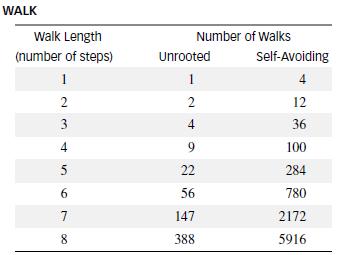Refer to the American Scientist (JulAug. 1998) study of the relationship between number of self avoiding and
Question:
Refer to the American Scientist (Jul–Aug. 1998) study of the relationship between number of self avoiding and unrooted walks, Exercise 11.71. The data for the analysis are repeated in the accompanying table.

a. Give the equation relating the coded variable u to walk length, x, using the coding system for observational data.
b. Calculate the coded values, u.
c. Calculate the coefficient of correlation r between the variables x and x2.
d. Calculate the coefficient of correlation r between the variables u and u2. Compare this value to the value computed in part c.
e. Let y = number of unrooted walks. Fit the model
E(y) = β0 + β1u + β2u22
using available statistical software. Interpret the result.
Data from Exercise 11.71
The American Scientist (July–Aug. 1998) published a study of the relationship between self-avoiding and unrooted walks. In a self-avoiding walk you never retrace or cross your own path, whereas an unrooted walk is a path in which the starting and ending points are impossible to distinguish. The possible number of walks of each type of various lengths are recorded in the accompanying table. Suppose you want to model the number of unrooted walks (y) as a function of walk length (x).
Step by Step Answer:

Statistics For Engineering And The Sciences
ISBN: 9781498728850
6th Edition
Authors: William M. Mendenhall, Terry L. Sincich





